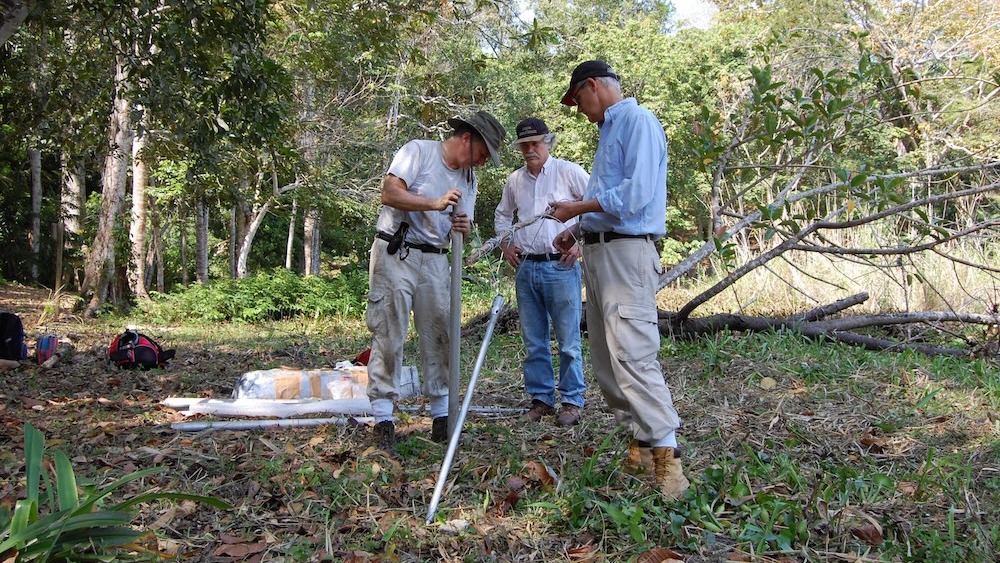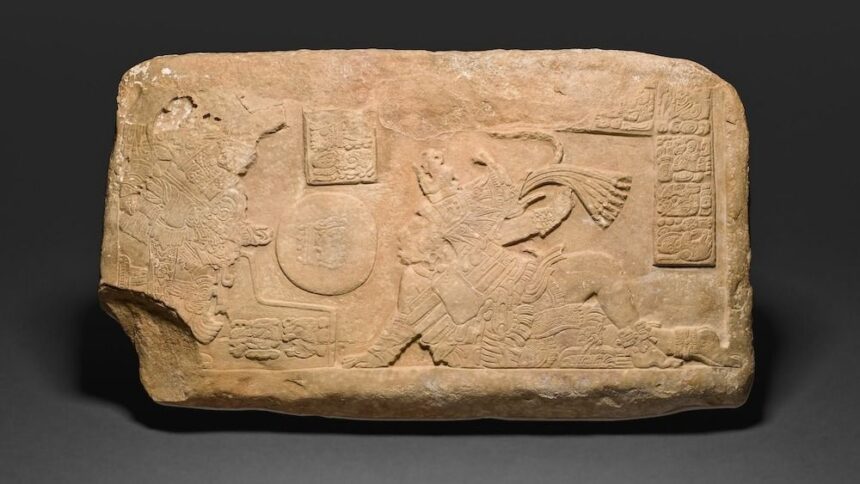A bundle of botanicals buried at an ancient Maya ball court in Mexico may have been placed there as part of a ritual, according to a new study.
Archaeologists made the discovery while conducting fieldwork in what was once the ancient Maya city of Yaxnohcah, on the Yucatán Peninsula. During excavations, they noticed a dark stain in the soil and collected samples of it, the team reported in the study, which was published Friday (April 26) in the journal PLOS One.
Back in the lab, researchers conducted an environmental DNA analysis of the soil, using a method they developed that involves collecting specimens in sealable, cryogenic tubes and preserving the samples as they are transported from the field to the lab. To preserve the samples, the researchers applied a solution called RNAlater, which helps to inhibit bacterial growth in the soil.
“It keeps the bacteria from eating DNA in there,” lead author David Lentz, a professor of biological sciences at the University of Cincinnati, told Live Science.
The analysis revealed that the stain was actually the remnants of four types of plants, all of which have known “religious associations and medicinal properties” and were often used by the Maya, according to a statement from the University of Cincinnati. The botanicals included a morning glory known as xtabentun, which has hallucinogenic properties, as well as lancewood and chile peppers. The plants were then wrapped in the leaves of the jool plant — a common step in Maya rituals.
“For the Maya, chile peppers were more than just a condiment and were often used in rituals and had medicinal applications,” Lentz said. “Xtabentun has similar physiological effects as LSD, and we’ve seen evidence of its use in a ceremonial context. It turns out that this was a ceremonial bundle.”
Researchers think the Maya likely made a ceremonial offering during the ball court’s construction. The Maya were known for playing several ball games, sometimes called pok-a-tok, in which players and even royalty would use their bodies, but not their hands or feet, to hit a rubber ball.

But they also used the ball courts for ceremonial purposes.
“Today we think of ball courts as a place for recreation, but the Maya also saw them as sacred,” Lentz said. “They would have placed the bundle while they were building the ball court as an offering to the gods to let them know that they were changing the landscape and to please bless it. This [ritual] coincides with similar ceremonies we’ve found evidence of at other [Maya] sites.”
Based on the analysis, the researchers determined that the ceremonial bundle was placed at the site around A.D. 80, Lentz said.
The researchers were impressed that traces of the plants lasted nearly 2,000 years in a tropical climate.
“For the study, we collected about 5 grams [0.2 ounce] of soil, and in that, there were over 100,000 DNA sequences,” Lentz said. “Of those, only 15 were from plants. It was pulling a needle out of a haystack.”

